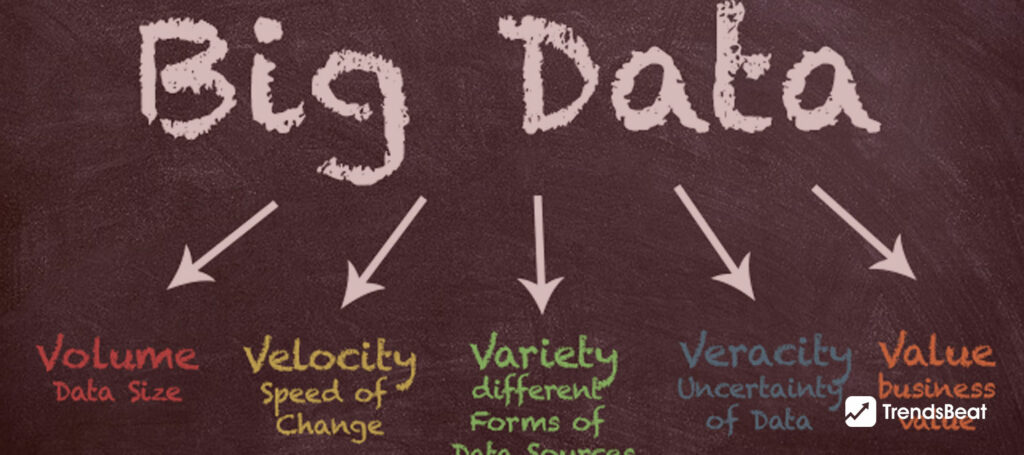Revealing The Key Elements To Refining A Data-Driven Culture

Every corporation in the world today is a data firm. For businesses to prosper, they must be data-driven. Over the past ten years, data has multiplied astronomically. An increasing number of firms have begun the process of becoming data-driven and using data to make more informed choices more frequently. For many firms, a strong data-driven culture is still elusive, and numbers are rarely used as the lone basis for choices. The attitudes and values that are carried down through generations beginning at conception through material and habits are the foundation of a community or company culture. When developing a data-driven culture, the same approach can be used. The foundational design lays the groundwork for the routines and procedures surrounding data utilization.
What Is A Data-Driven Culture?
A company’s organizational culture is its binding agent. It concerns people, their actions, and their convictions. Similar circumstances apply to data quality: data governance, which refers to the explicit guidelines, norms, and manuals put in place to control data, is merely the tip of the iceberg. The mindset, cooperation, and actions that help it happen invisibly but have a much bigger impact. Data usage is a crucial aspect of a culture that is data-driven. Data-driven businesses create procedures and processes to make it simple for staff members to obtain the necessary information, but they are also open about data access limitations and governance practices.
An organization can only go so far using the data. The people are what really move things. Analytics executives need to hire the best staff, set a good example, and know when to avoid relying solely on data. Evidence is a crucial part of any procedure for making choices, yet moral or political considerations may take precedence over what the evidence indicates.
Key Elements To Refining A Data-Driven Culture
Although there are many factors that influence an organization’s data-driven culture, studies frequently identify the following key elements:
Leadership Commitment
Top managers in organizations that have established data-driven cultures frequently set the expectation that choices must be supported by data and that doing so is a standard procedure rather than anything unusual or innovative. They set an example by doing. Executives at the highest levels should aggressively promote and support the application of data in decision-making. They ought to create priorities, establish objectives, and lead by example by making use of data-driven insights.

Clearly Defined Approach & Defined Metrics
By carefully selecting what to track and the metrics they want their team members to utilize, leaders may have a significant impact on how they behave. Clearly define your goals and plan for being data-driven. This includes establishing clear goals and objectives for utilizing data to inform decisions, enhance workflows, and produce desired business results.
The operator might perform a quantitative examination of the effects of network enhancements on consumers by establishing comprehensive metrics on customer experiences. To achieve this, the corporation simply needs to have a lot tighter hold than usual on the origin and use of its data, and that’s the whole objective.
Data Education And Literacy
Encourage data literacy within the organization. Give staff the tools and training they need to comprehend and use data. Provide training in data visualization and storytelling, as well as seminars on data analysis and interpretation. Promote a learning environment that respects data-driven judgment. Many businesses spend on “big bang” training initiatives, but if employees don’t immediately put what they’ve learned to use, they quickly forget it.
Therefore, while foundational training should include basic skills like coding, it is more efficient to train staff in advanced analytical concepts and tooling only before these are required, such as for a proof of concept. One store didn’t train its support analysts in the finer parts of experimental design until just before a first market trial. The knowledge persisted, and now analysts use words like statistical confidence that were once foreign to them.
Avoid Boxing In Your Data Scientists
If analytics is run apart from the rest of a business, it cannot thrive or be useful. Making any divisions between the company and the data analysts exceedingly porous is the first strategy. Along with bringing data science closer to the business, it’s also important to push the business in the direction of data science, particularly by requiring people to be code literate and conceptually adept in quantitative matters. There is no need for senior leaders to reincarnate as machine-learning engineers. Leaders of data-centric organizations, however, cannot continue to be in the dark about the language of data.

Cross-Functional Teams And Cooperation
Cross-functional cooperation and teamwork are encouraged. Break down silos and establish cross-functional teams that collaborate to use data to drive innovation and problem-solving. To advance organizational learning, cultivate a culture of communicating data, insights, and best practices. Create effective lines of communication for the organization as a whole to exchange data insights, findings, and successes. Making data readable and interesting requires the use of storytelling and data visualization approaches. Promote transparency by outlining the reasoning behind decisions, openly discussing data-driven decision-making processes, and responding to any worries or queries.
Encourage Shift & Change
Companies, their departments, and the people that make up each of them frequently rely on habit since the alternatives seem hazardous. Data can offer evidence to support assumptions, enabling managers to go into new processes and areas without taking a blind leap. However, merely wanting to be data-driven is insufficient. Companies must create cultures where this thinking may flourish if they want to be data-driven. Leaders may model this transformation for others by adopting new behaviors and setting standards for what it means to truly base choices on facts.
For many firms, particularly small enterprises, a data-driven strategy is still a relatively new component of customer success. Data collection and analysis are now easier than ever thanks to modern technology. However, for your team, making decisions based on data may represent a paradigm shift.















































































![Essential-Cybersecurity-Tips-for-Small-Businesses-[Protect-Your-Data]-TrendsBeat](https://trendsbeat.com/wp-content/uploads/2023/05/Essential-Cybersecurity-Tips-for-Small-Businesses-Protect-Your-Data-feature-image-template-1024x455.jpg)


















![Top Fitness Trends & Workout Routines to Follow [Stay Fit, Stay Healthy]](https://trendsbeat.com/wp-content/uploads/2023/04/feature-image-Top-Fitness-Trends-Workout-Routines-to-Follow-Stay-Fit-Stay-Healthy-1024x455.jpg)










![[Weight Loss Medication Health Effects] Side Effects and Best Advice](https://trendsbeat.com/wp-content/uploads/2023/04/feature-image-Weight-Loss-Medication-Health-Effects-Side-Effects-and-Best-Advice-1024x455.jpg)



